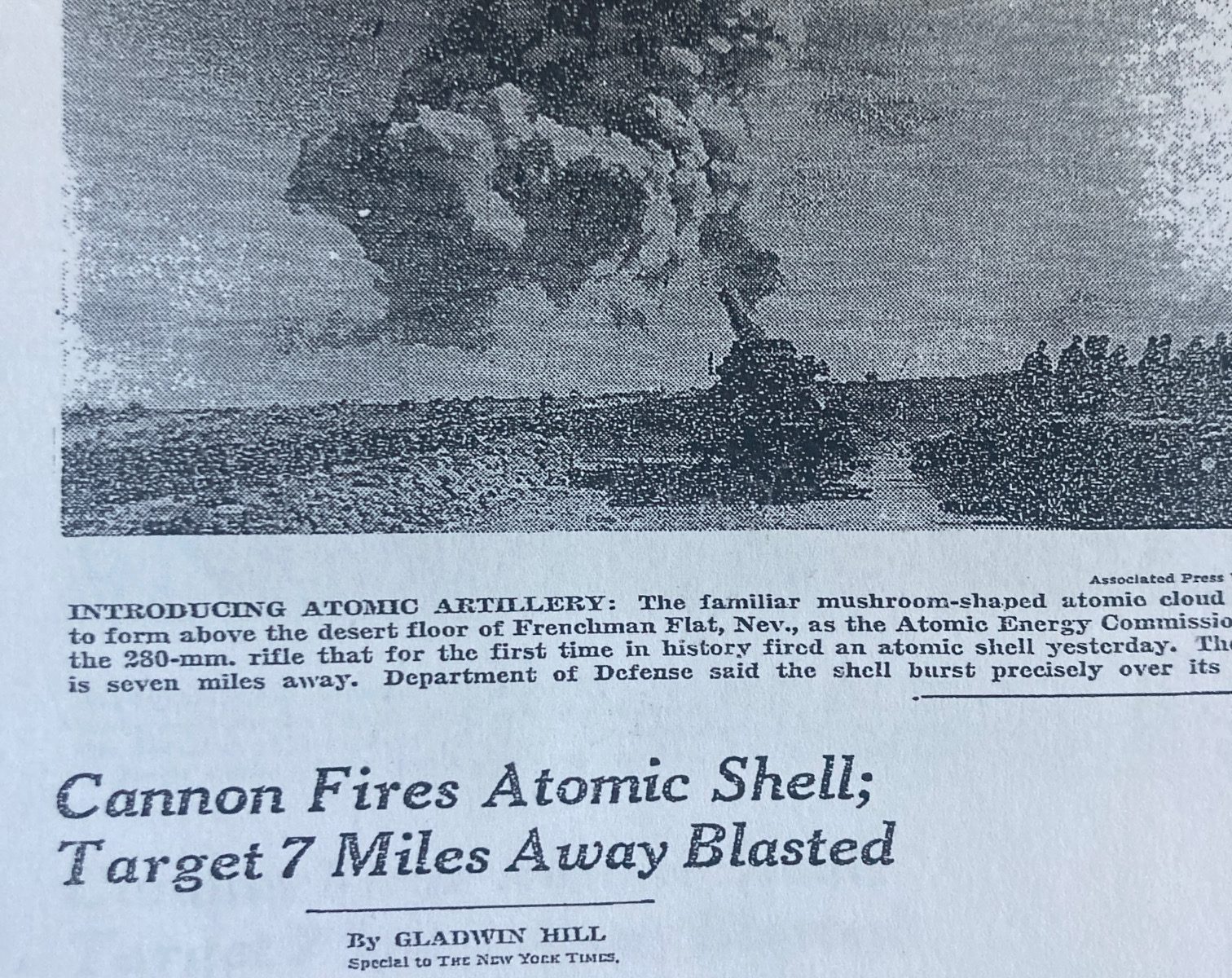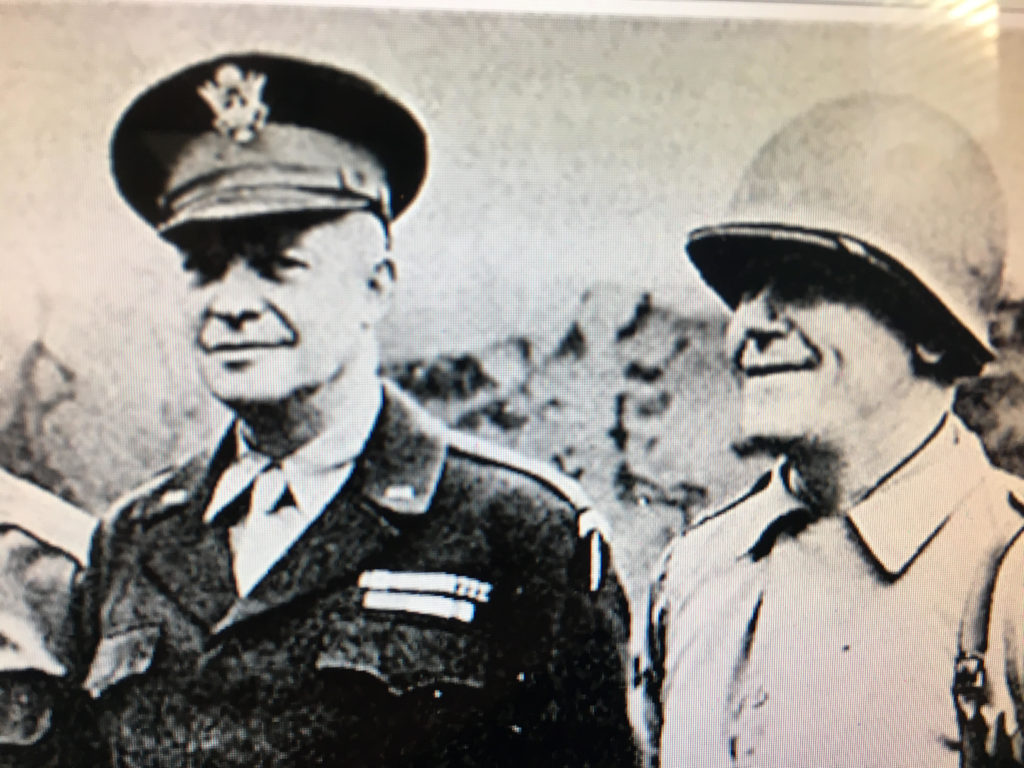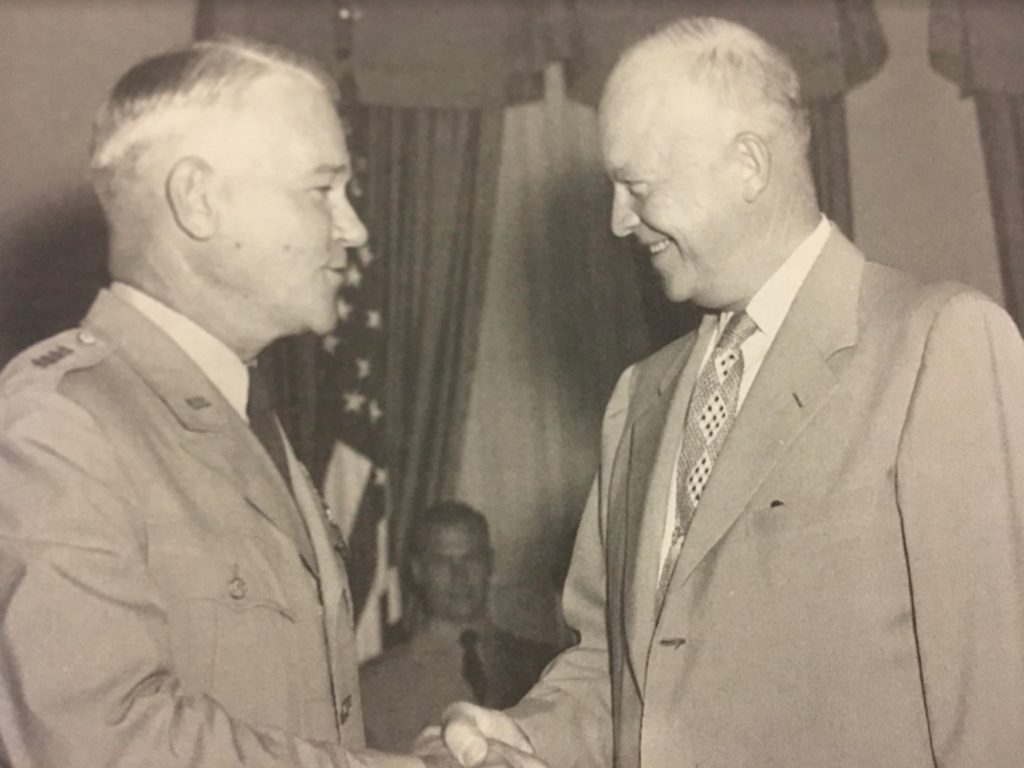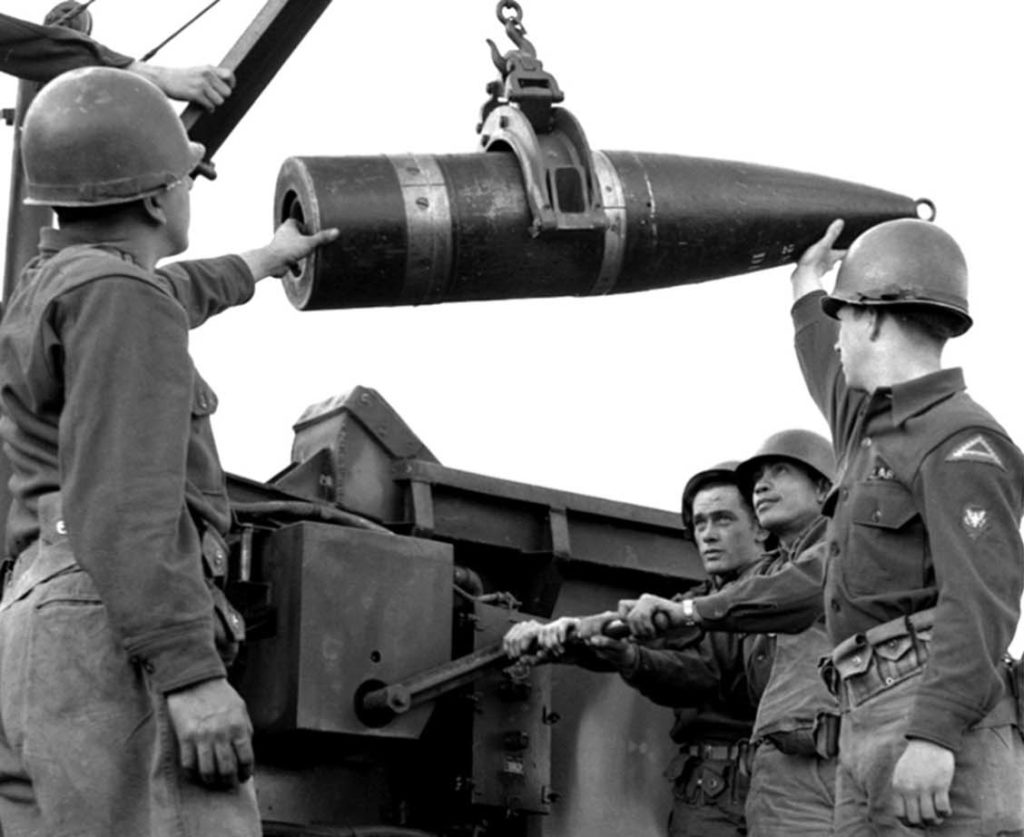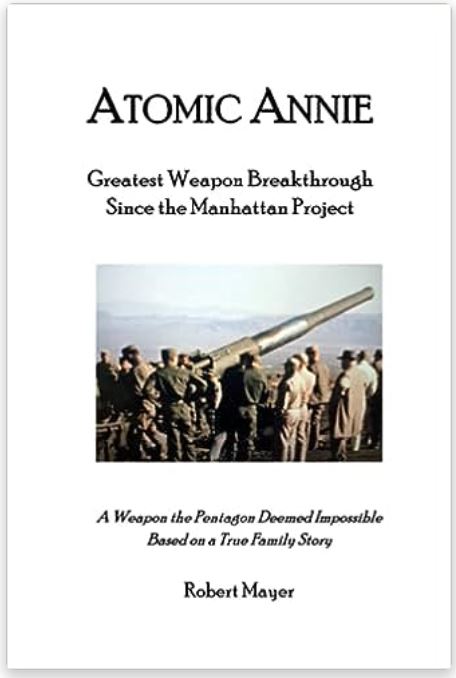United States “Game Changer” Weapon Breakthrough May, 1953 facilitates end of Korean War
In the biggest weapon breakthrough since the day the atomic bomb destroyed much of Hiroshima, Japan, the US ran a military exercise simulating an Army battalion possessing a nuclear warhead. All previous nuclear bombs had been dropped from planes.
To end WWII, the Enola Gay, under the direction of President Truman, had dropped a 10,000 pound “Little Boy” bomb on Hiroshima in August 1945. On May 23,1953 the United States would again fire “the shot heard round the world” when it’s Army fired an 800 pound bomb of equal power from a cannon. The cannon, nicknamed Atomic Annie, had its origins in the large Nazi cannons captured from the Germans in WWII and brought back to the US.
The United States War Games on May 25,1953 were attended by our highest ranking military officials including both the Chairman-elect of the Joint Chiefs of Staff and the Army Joint Chief of Staff. The nuclear warhead fired from a cannon would have much greater precision at hitting it’s target than the bomb dropped on Japan. The atomic cannon’s pinpoint precision would allow the United States to kill the enemy combatants without any civilian casualties.
Commenting on atomic artillery the WWII hero, 5-star general and newly elected President Dwight “Ike” Eisenhower commented “If I had an atomic bomb that just killed the enemy military, why wouldn’t I use it? It would be like using a bullet.”
Ike tremendous popularity was based on his promise to end the Korean War. Atomic Annie gave Ike just what he needed to end the war quickly and among foreign communist leaders, they knew Ike would use any weapon to do so.
The Nevada desert war games could be seen from the famous “Vegas Strip” and many vacationers watched the nuclear explosions and mushroom cloud from their pools or balconies.
The two photos with this blog are a picture from the Nevada Strip and the front page of the NY times announcing the era of atomic artillery had begun and the US Army was now the most powerful Army in the World”. Said Pentagon officials in the NY Times “The balance of power in the Cold War has now put the United States above the Soviet Union”.
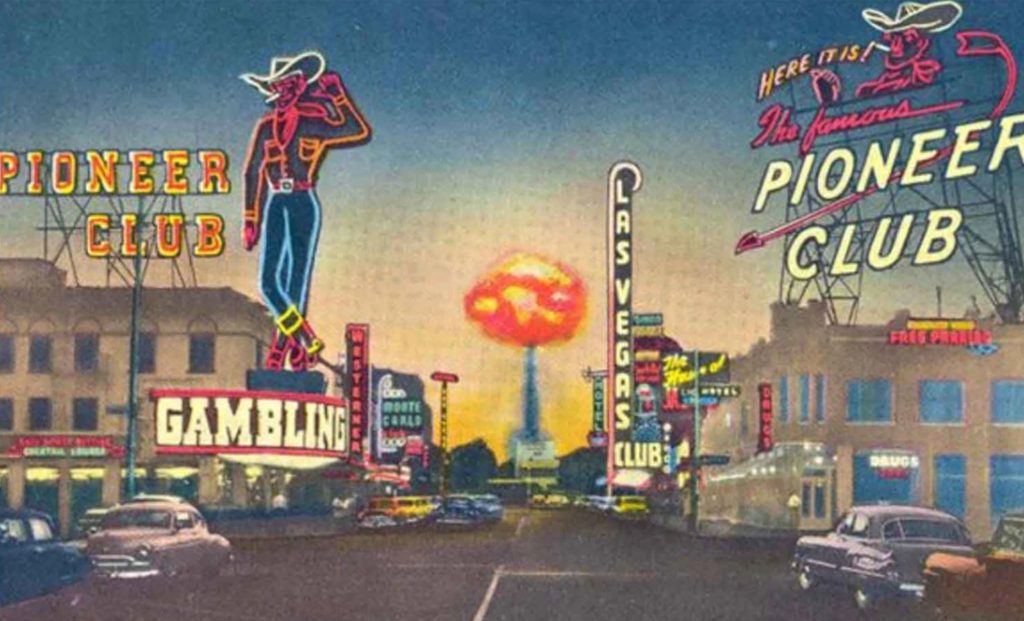
When Ike swept to his Presidential Victory in November 1952 he promised 2 things: an end to the Korean War and reducing the military budget. With the Atomic Annie he had the capability to accomplish his most cherished goal of ending the killing in Korea, but now the age of atomic artillery had begun and controlling the budget during the Cold War Arms race would prove more difficult.
The Nevada war games, that witnessed the Atomic Annie, lasted about 10 days and on the last day, Ike announced that after a two year stalemate in armistice negotiations, there was a major breakthrough and the communists had agreed to all of his demands, unconditionally.

